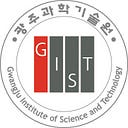Gwangju Institute of Science and Technology Researchers Detect Coronavirus Particles with “Slow Light”
The novel detection platform is fast, accurate, and performs label-free imaging of virus particles by slowing down light
Existing methods for detecting and diagnosing COVID-19 are either expensive and complex or inaccurate. Now, scientists from the Gwangju Institute of Science and Technology have developed a novel biosensing platform to detect and quantify viral particles using a simple optical microscope and antibody proteins. Their versatile approach, based on slowing down light, could pave the way to new diagnostic tools and next-generation detection platforms that are fast, accurate, and low-cost.
Despite all the bad news the COVID-19 pandemic brought upon the world, it has helped us gain a better perspective of our readiness to fend off highly contagious diseases. Rapid diagnostic test kits and PCR testing quickly became essential tools when the pandemic hit, helping with timely diagnoses. However, these tools have inherent limitations. PCR tests are complex and require expensive equipment while rapid diagnostic test kits have lower accuracy.
Against this backdrop, a research group led by Professor Young Min Song of the Gwangju Institute of Science and Technology in Korea has recently developed a new technique to easily visualize viruses using an optical microscope. A recent study explains in detail the operating principle of their detection platform, called the “Gires–Tournois immunoassay platform” (GTIP). This paper was made available online on March 22, 2022, and was published in the journal Advanced Materials on March 26, 2022.
The key element of GTIP is the Gires–Tournois “resonance structure,” a film made from three stacked layers of specific materials that produce a peculiar optical phenomenon called “slow light.” Because of how incident light rebounds inside the resonant layers before being reflected, the color of the platform seen through an optical microscope appears very uniform. However, nanometer-sized virus particles affect the resonance frequency of GTIP in their immediate vicinity by slowing down the light that gets reflected around them. The “slow light” manifests as a vivid color change in the reflected light so that, when viewed through the microscope, the virus particle clusters look like “islands” of a different color compared to the background.
To ensure that their system only detects coronavirus particles, the researchers coated the top layer of GTIP with antibody proteins specific to SARS-CoV-2. Interestingly, not only did the system enable the detection of viral particles, but, by using colorimetric analysis techniques, the researchers could even effectively quantify the number of virus particles present in different areas of a sample depending on the color of the light reflected locally.
The overall simplicity of the design is one of the main selling points of GTIP. As Prof. Song explains, “Compared to existing COVID-19 diagnostic methods, our approach enables rapid detection and quantification of SARS-CoV-2 without needing extra sample treatments, such as amplification and labeling.” Given that optical microscopes are available in most laboratories, the method developed by the group could become a valuable and ubiquitous diagnostic and virus research tool.
Furthermore, GTIP is not limited to detecting viruses or strictly dependent on antibodies; any other binding agent works as well, helping visualize all kinds of particles that interact with light. “Our strategy can even be applied for a dynamic monitoring of target particles sprayed in the air or dispersed on surfaces. We believe that this approach could be the basis for next-generation biosensing platforms, enabling simple yet accurate detection,” concludes Prof. Song.
Let us hope his vision is realized soon so we can be better prepared for future pandemics!
Reference
Authors:
Young Jin Yoo1, Joo Hwan Ko1, Gil Ju Lee2, Jiwon Kang1, Min Seok Kim1, Stefan G. Stanciu3, Hyeon-Ho Jeong1, Dae-Hyeong Kim4,5,6, and Young Min Song1
Title of original paper: Gires-Tournois immunoassay platform for label-free bright-field imaging and facile quantification of bioparticles
Journal: Advanced Materials
DOI: https://doi.org/10.1002/adma.202110003
Affiliations:
1School of Electrical Engineering and Computer Science, Gwangju Institute of Science and Technology
2Department of Electronics Engineering, Pusan National University
3About the Gwangju Institute of Science and Technology (GIST)
The Gwangju Institute of Science and Technology (GIST) was founded in 1993 by the Korean government as a research-oriented graduate school to help ensure Korea’s continued economic growth and prosperity by developing advanced science and technology with an emphasis on collaboration with the international community. Since that time, GIST has pioneered a highly regarded undergraduate science curriculum in 2010 that has become a model for other science universities in Korea. To learn more about GIST and its exciting opportunities for researchers and students alike, please visit: http://www.gist.ac.kr/.
About the author
Prof. Young Min Song is currently serving as a Professor in the School of Electrical Engineering and Computer Science at GIST. He received a Ph.D. in Information and Communications from GIST in 2011. From 2011 to 2013, he was a postdoctoral research associate in the Department of Materials Science and Engineering at the University of Illinois at Urbana-Champaign (UIUC), USA. Over the decades, he has predominantly focused his efforts on developing bio-inspired optics/photonics. His group is developing advanced optoelectronic sensors/systems, multifunctional nanophotonics, and optical healthcare systems.Center for Microscopy-Microanalysis and Information Processing, Politehnica University Bucharest
4Center for Nanoparticle Research, Institute for Basic Science (IBS)
5School of Chemical and Biological Engineering, Institute of Chemical Processes, Seoul National University
6Department of Materials Science and Engineering, Seoul National University
